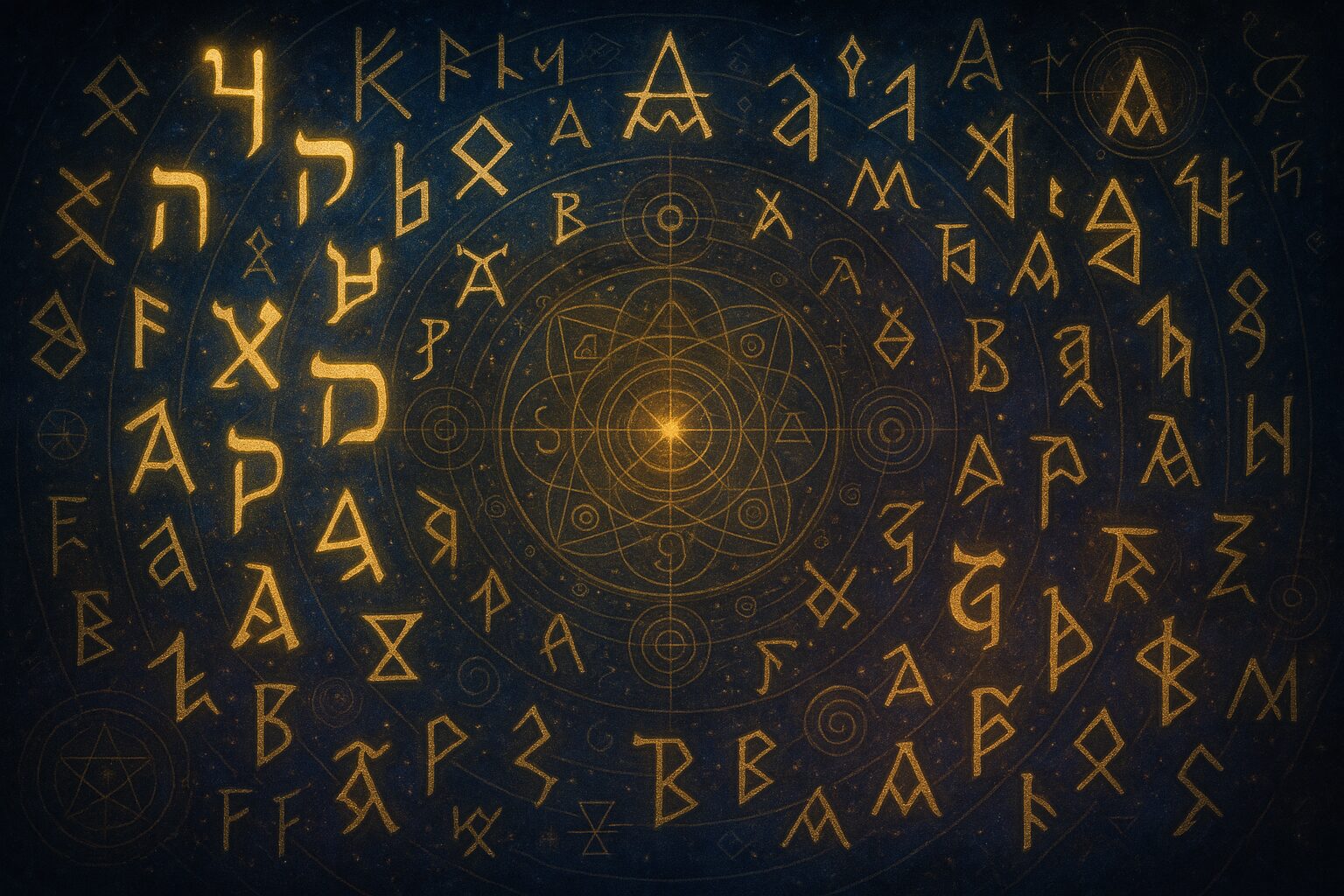“That which is below is like that which is above…”
— The Emerald Tablet, quoted by John Dee
England has always been haunted. Beneath its stiff propriety, beneath its rain-damp cobblestones and scholarly traditions, there pulses a darker rhythm. The English occult is not flamboyant—it is discreet, encoded in the margins, whispered in libraries, and practiced in attics under candlelight. It is an occultism of ink, smoke, and silence.
This is a land of grimoires and grammar schools. A land where alchemists corresponded with angels, where magicians walked among kings, and where rituals were performed not in temples but in drawing rooms.
John Dee: The Royal Alchemist
Dr. John Dee (1527–1609), astrologer to Queen Elizabeth I, is the father-spirit of English occultism. Mathematician, spy, alchemist, mystic—he dreamed of unifying science and spirit in one universal philosophy. In his home in Mortlake, Dee claimed to converse with angels through a scrying stone, recording their speech in the complex language of Enochian.
“The heavens declare the glory of God,” wrote Dee, quoting scripture, but he believed the true divine speech must be retrieved—one sigil at a time.
Dee’s world was both mystical and geopolitical: a Protestant magical empire guided by divine intelligences. His fusion of cabbala, Hermeticism, and science became the DNA of English ceremonial magic.
The Golden Dawn and the Victorian Revival
Centuries later, Dee’s legacy was reborn in The Hermetic Order of the Golden Dawn—a late 19th-century magical society blending Tarot, Kabbalah, and ritual initiation. Its members included W.B. Yeats, Dion Fortune, and the infamous Aleister Crowley.
The Golden Dawn system was baroque and rigorous. Rituals were structured like metaphysical operas—designed to reshape the magician’s soul. It was a school of inner alchemy, deeply English in its love of hierarchy and symbolism.
“The true knowledge of God is the knowledge of the self,” wrote Fortune, weaving mystical Christianity into occult structure.
Aleister Crowley: The English Antichrist
Crowley, both reviled and revered, took the Golden Dawn’s teachings and shattered them into a new magical religion: Thelema. His slogan:
“Do what thou wilt shall be the whole of the Law.”
While Crowley’s style was sensational, his roots were English—Cambridge-educated, classically trained, methodical. The flamboyance was performance; underneath lay a profound esoteric system. Crowley called himself a prophet. Others called him a blasphemer. Regardless, he mapped new magical territories that continue to influence chaos magick and modern occultism today.
Austin Osman Spare and the London Dreaming
Crowley was not alone. Artist-mage Austin Osman Spare created a rawer, more personal occultism based on sigil magick—the use of stylized symbols charged with intent and buried in the subconscious.
“The soul is the ancestral animals,” Spare wrote cryptically, suggesting a descent into primal gnosis rather than celestial ascent.
His style was deeply urban. Spare’s rituals were crafted not for temples but for bedrooms, back alleys, and dreams. His influence on the chaos magick movement marks a shift toward do-it-yourself spirituality, rooted in vision rather than lineage.
A Ritual in the Fog
The English occult is not a loud tradition—it’s a whisper. It is the smell of beeswax and paper. It is found in London’s twisting streets, in the names of pubs, in the obscure symbols carved above old doorways.
It is a tradition of correspondence. A mystical mail system, where the sender is human, and the recipient may not be.
Conclusion: The Sigil and the Empire
The English Empire may be gone, but its occult shadow remains. The desire to control fate, to speak with angels, to design spiritual systems—it all lingers.
The English occult is not theatrical—it is methodical. It is a ritual wrapped in reason, a magick that dresses as scholarship, and a mystery performed beneath a scholar’s robe.
It is, above all, alive.

